Arcades of Peace: Discovering Mirogoj in Zagreb
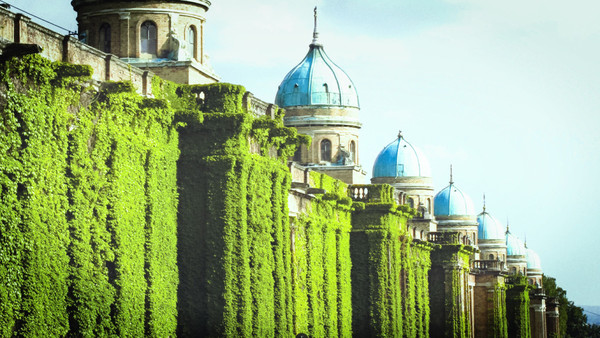
[아츠앤컬쳐] 크로아티아의 수도 자그레브의 미로고이 묘지는 고인을 기리는 품위 있고 아름다운 곳이다. 이 조용한 장소는 유럽에서 가장 아름다운 묘지 중 하나이며, 추모와 성찰, 평온의 장소일 뿐만 아니라 무성한 녹지로 둘러싸인 건축 걸작이다. 그늘진 길을 걸으며 방문객들은 묘지뿐만 아니라 놀라운 건축물, 예술, 역사와 시간의 흔적을 발견할 수 있다.
미로고이 묘지는 1876년 크로아티아 민족 부흥의 주역이자 시인, 정치인인 류데빗 가이의 옛 저택에, 자그레브의 도시 정체성을 깊이 있게 형성한 건축가 헤르만 볼레의 설계로 건립되었다. 묘지는 메드베드니차산 아래 자그레브 북쪽 경사면에 도시를 내려다보는 조용하고 높은 위치에 자리 잡고, 가톨릭, 정교회, 유대교, 무슬림, 개신교 등 모든 신앙인에게 개방된 안식처로 설립되었다. 돔의 스카이라인은 이러한 화합과 포용 정신으로 하나의 묘지라는 이념을 구현한다.
묘지의 가장 눈에 띄는 특징은 벽을 따라 뻗어 있는 아케이드와 담쟁이덩굴에 덮인 돔으로 장식된 웅장한 입구다. 헤르만 볼레가 설계한 이 아케이드, 둥근 지붕, 부속 건물은 미로고이에 독특한 매력을 더한다. 여름에는 햇빛이 아치를 통과하면서 담쟁이덩굴이 선명한 녹색으로 빛나며 신성한 건축과 자연의 고요함이 완벽하게 조화를 이룬다.
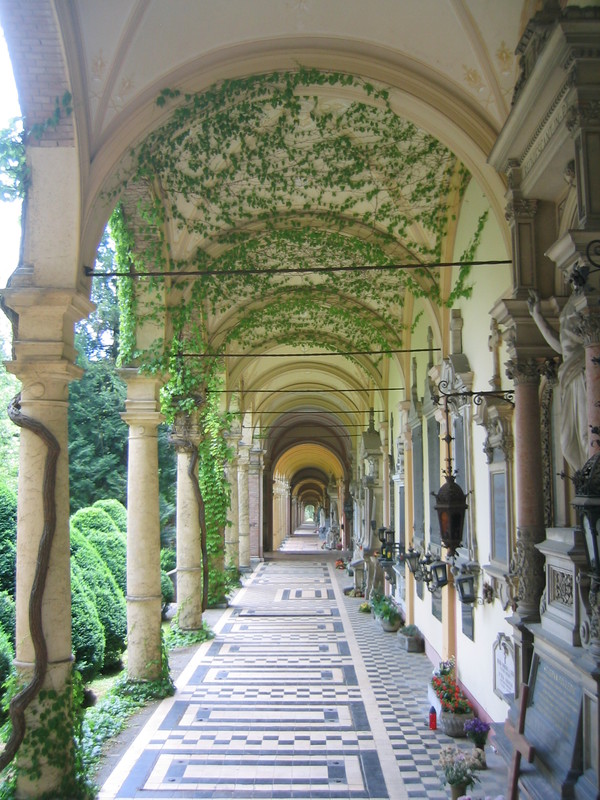
미로고이의 아케이드 건설은 1879년에 시작되어 수십 년 동안 계속되었다. 대부분의 단지는 1917년에 완공되었고, 부지 안쪽의 그리스도 왕 교회는 1929년에 완공되었다. 볼레의 건축 디자인은 벽돌, 석조, 구리 돔이 특징인 고딕 디테일과 네오르네상스의 선명함을 결합했다. 또한 이반 메슈트로비치, 안툰 아우구스틴치치, 두샨 쟈모냐, 에도 무르티치와 같은 크로아티아의 유명 예술가들의 작품이 수년에 걸쳐 배치되어 묘지에 놀라운 야외 갤러리의 면모를 더한다.
미로고이는 크로아티아의 정치, 문화, 과학, 사회 각계각층의 저명 인사들의 안식처다. 작가 안툰 구스타프 마토시, 틴 우예비치, 이바나 브릴리치-마쥬라니치, 미로슬라브 크를레쟈, 과학자 안드리야 모호로비치치와 노벨상 수상자 블라디미르 프레로그, 초대 크로아티아 대통령 프라뇨 투즈만, 그리고 수많은 예술가, 작곡가, 배우들이 있고, 농구 전설 드라젠 페트로비치와 크레시미르 초시치의 무덤이 있다. 미로고이 산책은 크로아티아 역사의 한 페이지를 넘기는 것과 같으며, 모든 기념비에는 정체성과 업적에 관한 이야기가 담겨 있다.
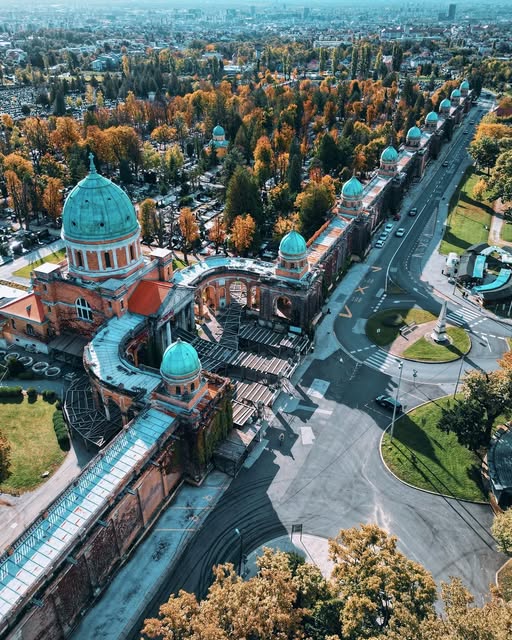
크로아티아 문화에서 고인에 대한 존경은 일 년 내내 생화로 장식하고 아름답게 관리된 무덤과 기념물에 잘 드러난다. 매년 11월 1일, 크로아티아인들은 만성절을 기념하는데, 이는 크로아티아에서 가장 감동적, 시각적으로 매혹적인 전통 중 하나다.
가족들은 국화, 꽃, 화환, 밤을 밝히는 수천 개의 촛불을 들고 묘지에 모인다. 미로고이의 가을 나무 아래로 수많은 불꽃이 반짝이며 유서 깊은 아케이드를 은은하게 비춘다. 이는 애도의 순간이자 삶을 고요하게 기념하는 순간으로, 독특한 문화적 경험을 제공하며 크로아티아인들이 고인을 깊이 추모하는 소중한 전통이자 관습이다. 미로고이는 묘지일 뿐만 아니라 문화 기념물이자 돌과 추모의 정원이며 도시 생활에서 평화로운 휴식을 취하는 공간이기도 하다.
주한 크로아티아대사관 김희지 비서관 번역
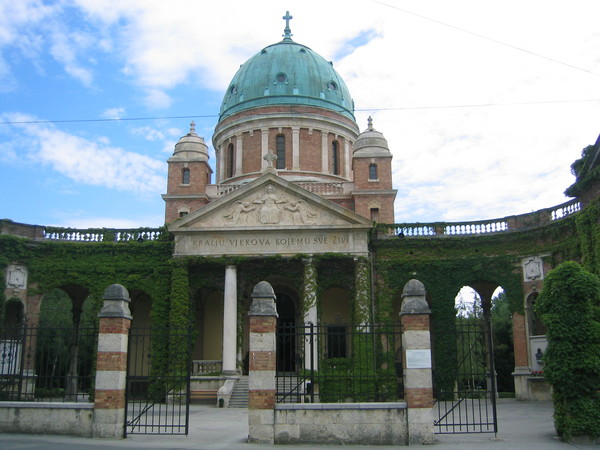
Arcades of Peace: Discovering Mirogoj in Zagreb
There are not many cities in Europe that can take pride in a place as dignified and beautiful for remembering the dead as Mirogoj Cemetery in Zagreb, the capital of Croatia. This quiet place is one of the most beautiful cemeteries in Europe. It is a place of remembrance, reflection, and calm, but also an architectural masterpiece embraced by lush greenery. Walking along its shaded paths, visitors discover not only a cemetery but also remarkable architecture, art, and the enduring traces of history and time.
Mirogoj Cemetery was founded in 1876 on the former estate of Ljudevit Gaj, a leading figure of the Croatian National Revival, poet, and politician. It was designed by architect Hermann Bollé, who profoundly shaped Zagreb’s urban identity. Situated on Zagreb’s northern slopes beneath Mount Medvednica, Mirogoj Cemetery occupies a serene, elevated position overlooking the city. It was founded as a resting place open to all faiths, Catholic, Orthodox, Jewish, Muslim, and Protestant alike. Its skyline of domes reflects this spirit of unity, embodying the idea of one cemetery for the entire city, a principle of inclusivity that endures in Zagreb today.
The cemetery’s most striking feature is its grand entrance, framed by arcades stretching along the walls and crowned with ivy-covered domes. Designed by Hermann Bollé, these arcades, cupolas, and pavilions give Mirogoj its distinctive charm. In summer, the ivy glows vibrant green as sunlight filters through the arches creating a perfect fusion of sacred architecture and natural serenity.
The construction of Mirogoj’s arcades began in 1879 and continued for several decades. Most of the complex was completed by 1917, while the Church of Christ the King, located further within the grounds, was finished in 1929. Bollé’s architectural design merges neo-Renaissance clarity with Gothic detail, featuring brick, stone, and copper domes. Additionally, works by renowned Croatian artists such as Ivan Meštrović, Antun Augustinčić, Dušan Džamonja, and Edo Murtić, placed on graves over the years, give the cemetery the character of a remarkable open-air gallery.
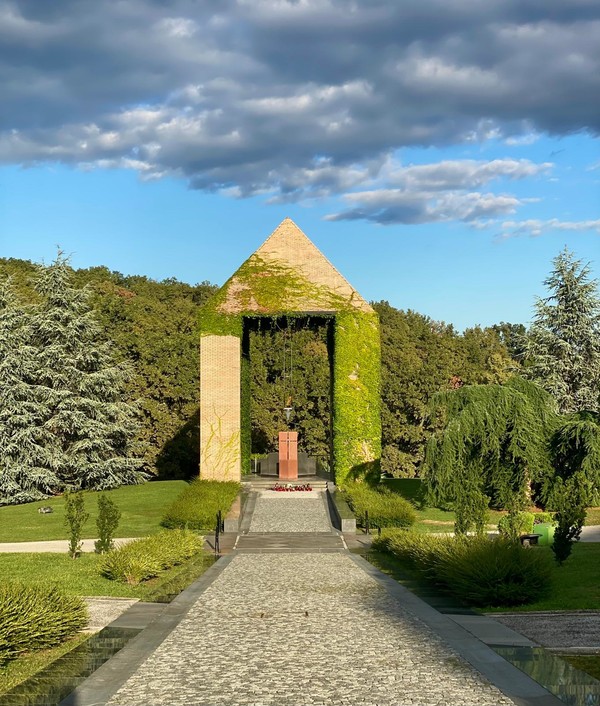
Mirogoj is the resting place of many of Croatia’s most prominent figures from politics, culture, science, and public life. Among them are writers Antun Gustav Matoš, Tin Ujević, Ivana Brlić-Mažuranić, and Miroslav Krleža; scientists Andrija Mohorovičić and Nobel laureate Vladimir Prelog; the first Croatian president Franjo Tuđman; and numerous artists, composers, and actors. Sports fans also visit the graves of basketball legends Dražen Petrović and Krešimir Ćosić. A walk through Mirogoj is like turning the pages of Croatian history, where every monument tells a story of identity and achievement.
In Croatian culture, respect for the deceased is deeply rooted, reflected in the beautifully maintained graves and monuments adorned with fresh flowers throughout the year. Each year on November 1, Croatians observe All Saints’ Day (Dan svih svetih), one of the nation’s most touching and visually captivating traditions.
Families gather at cemeteries, carrying chrysanthemums, flowers, wreaths, and thousands of candles that light up the night. At Mirogoj, the scene is both magnificent and unforgettable, countless flames flicker beneath the autumn trees, casting a soft glow over the historic arcades. It is at once a moment of mourning and a quiet celebration of life.
For visitors, this tradition offers a unique cultural experience, a memorable way to understand local customs and the deep respect Croatians hold for the deceased. Mirogoj is not only a cemetery but also a cultural monument, a garden of stone and remembrance, and a peaceful retreat from urban life.

글 | 로레타 베르토사 쿠센 Loreta Bertosa-Kusen
주영국크로아티아대사관 전권대사
Minister Plenipotentiary Embassy of Croatia in London

